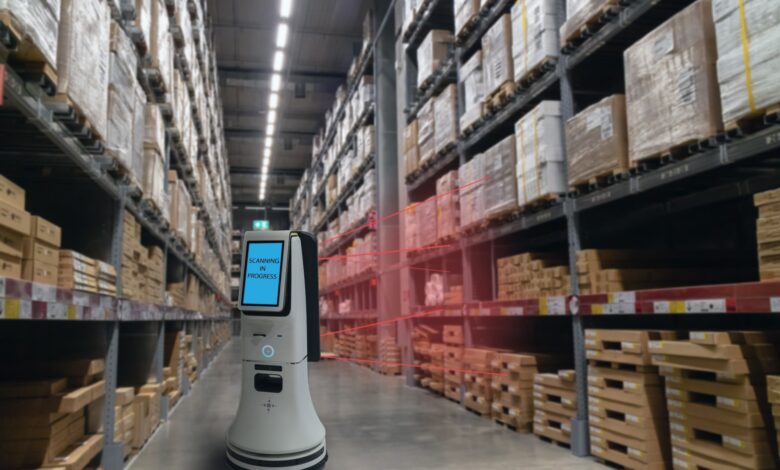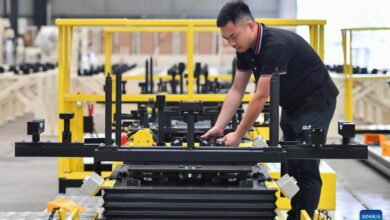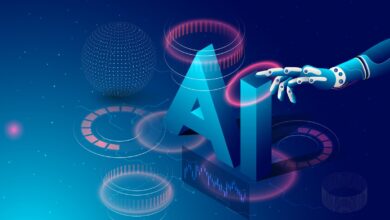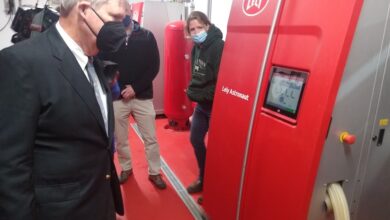Indoor Service Robot Design with ROS and Deep Learning

In a recent paper published in the journal Machines, researchers from China presented the design of an intelligent indoor service robot capable of performing tasks like precise object recognition, autonomous path planning, and obstacle avoidance. Built upon the robot operating system (ROS) framework and leveraging deep learning techniques, the robot aims to tackle the challenges encountered by indoor service robots in dynamic and complex environments.
The research also compared the performance of different simultaneous localization and mapping (SLAM) algorithms and evaluated the robot’s navigation and detection accuracy through simulations and real-world experiments.
Background
Service robots are becoming increasingly popular and useful in various industries and domains, such as hospitality, healthcare, education, and entertainment. They play a vital role in assisting humans with tasks that are repetitive, hazardous, or demand high levels of precision and efficiency. However, indoor service robots face many challenges, such as adapting to dynamic and complex environments, identifying and locating target objects, planning optimal paths, and avoiding obstacles.
To address these challenges, researchers have been exploring the use of ROS and deep learning for service robot applications. ROS is an open-source framework that provides a set of tools and libraries for developing robot software. It supports various hardware platforms, sensors, and algorithms and facilitates communication and coordination among robot components.
Deep learning is a branch of machine learning that uses artificial neural networks to learn from large amounts of data and perform tasks such as image recognition, natural language processing, and speech synthesis. It has been widely applied to enhance the perception and intelligence of service robots.
About the Research
In the present paper, the authors introduced the novel design of a service robot to recognize small objects effectively and accurately, such as pens, glasses, and cups, and autonomously navigate and avoid obstacles in office environments in the indoor environment. The robot consists of a differential drive chassis, a mechanical arm, a red, green, and blue (RGB) camera, a laser rangefinder, an inertial measurement unit (IMU), and two main controllers: a STM32F407VET6 microcontroller and an Nvidia Jetson Nano B01 embedded computer.
The proposed robot design uses the free real-time operating system (FreeRTOS) on the STM32F407VET6 side and the ROS framework on the Jetson Nano side and runs on the Ubuntu 18.04 operating system. It employs you-only-look-once version 3 (YOLOv3) algorithm, a state-of-the-art deep learning model for object detection, to identify and locate target objects in real-time.
The design also utilizes three different SLAM algorithms, namely GMapping, Hector-SLAM, and Cartographer, to construct and update environmental maps and estimate their pose. SLAM simultaneously creates and updates a map of an unknown environment while tracking the robot’s location. It is essential for navigation, exploration, and obstacle avoidance, and can be implemented using various sensors and algorithms.
Moreover, the robot uses Dijkstra’s algorithm and the teb_local_planner algorithm to plan global and local paths, avoiding obstacles along the way based on maps and sensor data. Additionally, the researchers conducted a series of simulations and real-world experiments to validate the performance and feasibility of the robot, including mapping, navigation, and target detection functionalities. They also compared the results of different SLAM algorithms in terms of map quality, accuracy, and robustness and evaluated the object detection algorithm in terms of precision, recall, F1 score, and mean average precision (mAP).
Research Findings
The outcomes showed that the new robot was able to successfully perform mapping, navigation, and target detection tasks in indoor environments. Moreover, it was able to generate accurate and comprehensive maps using the SLAM algorithms and to plan and execute optimal paths while avoiding obstacles using the path planning algorithms. Additionally, it was also able to detect and identify small objects with high accuracy and efficiency using the YOLOv3 algorithm.
Among all the utilized SLAM algorithms, the Cartographer algorithm performed the best in terms of map quality, accuracy, and robustness, followed by the Hector-SLAM algorithm and the GMapping algorithm. The Cartographer algorithm was able to produce smooth and consistent maps with minimal errors and distortions. In contrast, the Hector-SLAM algorithm was able to handle fast motion and dynamic environments well but suffered from drift and noise issues. The GMapping algorithm was able to generate maps with clear boundaries and details but was sensitive to parameter settings and initial poses and prone to loop closure failures.
Moreover, the object detection algorithm, YOLOv3 achieved a high performance in terms of precision, recall, F1 score, and AP, indicating that it was able to locate and classify small objects accurately and reliably. Additionally, the authors compared the use of adaptive moment estimation (Adam) and stochastic gradient descent (SGD) optimization algorithms and found that the Adam algorithm performed better than the SGD algorithm in terms of mAP, suggesting that it was more suitable for object detection tasks.
Applications
The proposed indoor service robot has many potential applications in different domains and scenarios, such as:
- Hospitality: The robot can serve as a waiter, delivering food and drinks to customers, or as a receptionist, greeting and guiding guests.
- Healthcare: The robot can assist in patient care, such as monitoring vital signs, delivering medications, or providing companionship.
- Education: The robot can act as a tutor, teaching and testing students on various subjects, or as a librarian, helping users find and borrow books.
- Entertainment: The robot can entertain users with games, music, or stories or provide information and recommendations on various topics.
Conclusion
In summary, the novel robot demonstrated effectiveness in indoor service tasks by accurately recognizing small objects and navigating complex environments autonomously. Moving forward, researchers identified areas for improvement, including enhancing mechanical arm and camera stability, refining object detection algorithms, optimizing SLAM algorithms, and integrating additional sensors for better localization. They also suggested developing advanced functionalities like voice interaction and facial recognition.
Journal Reference
Liu, M.; Chen, M.; Wu, Z.; Zhong, B.; Deng, W. Implementation of Intelligent Indoor Service Robot Based on ROS and Deep Learning. Machines 2024, 12, 256. https://doi.org/10.3390/machines12040256, https://www.mdpi.com/2075-1702/12/4/256.



